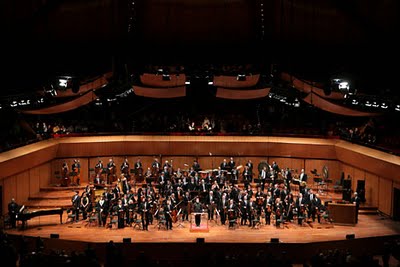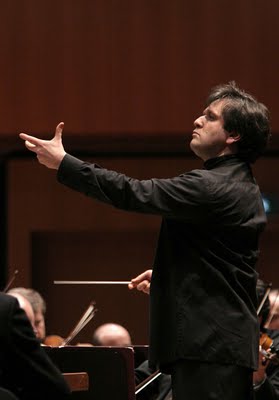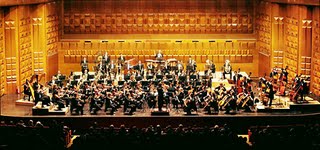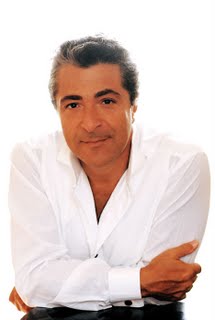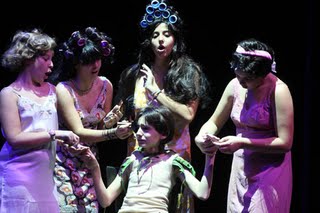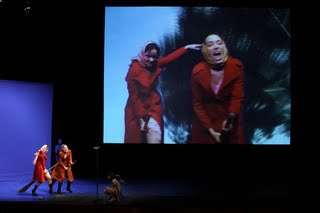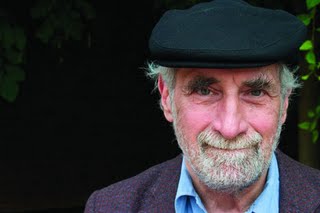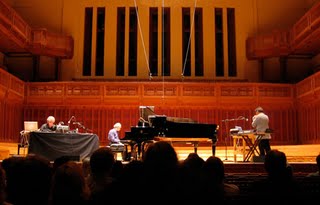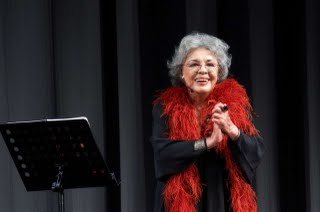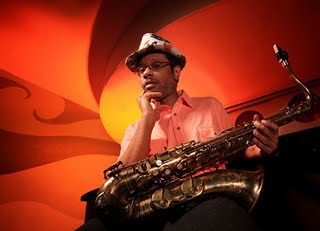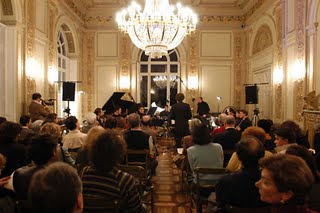A World Premiere in Rome: Pappano Conducts Henze's Latest "Konzertoper"
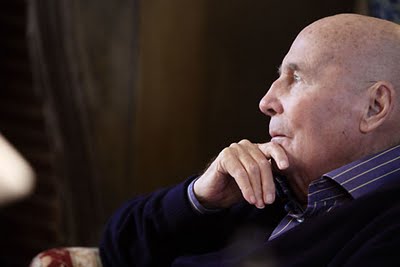 By Giuseppe Pennisi
By Giuseppe PennisiMuch awaited in the international music world, Hans Werner Henze’s Opfergang had its debut on January 10th at the main 2832-seat Santa Cecilia auditorium of the Parco della Musica in Roma. There were about 80 music critics from ten countries at this world premiere.
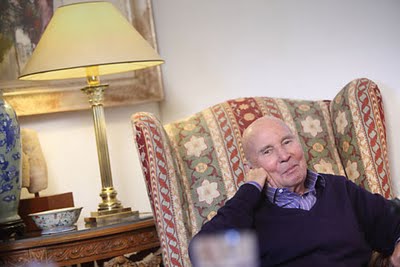 Maestro Henze is the most frequently performed living contemporary musician. He has lived in Italy since the early 1950s, more specifically since the beginning of the 1960s in a magnificent villa near Rome. Yet Opfergang is the first musical composition commissioned by an Italian institution (the Accademia Nazionale di Santa Cecilia). Maestro Henze is 83 years old. His fans and the musical world in general thought that his last major work would have been “Upupa,” premiered at the 2003 Summer Salzburg Festival and, since them, performed in many countries (but not yet in Italy) as well as considered the first major opera of the 21st Century. Thereafter, for a long period, Maestro Henze was seriously ill. He was in a coma for five months and seemed to be about to die. After his recovery, he had to cope with the death of his life-long partner. Surprisingly, in the last few years a new Spring appears to have begun for him. A flow of new major compositions: Sebastiam in Traum in 2005, Gogo no eiko (from a text by Japanese writer Mishima) in 2006, Pheadra in 2007, Elegium Musicum Amatissimi Amici Nunc Remoti in 2008 and now Opfergang (Immolazione, or Holocaust in the Italian translation in the program, but more accurately Sacrificium, Sacrifice).
Maestro Henze is the most frequently performed living contemporary musician. He has lived in Italy since the early 1950s, more specifically since the beginning of the 1960s in a magnificent villa near Rome. Yet Opfergang is the first musical composition commissioned by an Italian institution (the Accademia Nazionale di Santa Cecilia). Maestro Henze is 83 years old. His fans and the musical world in general thought that his last major work would have been “Upupa,” premiered at the 2003 Summer Salzburg Festival and, since them, performed in many countries (but not yet in Italy) as well as considered the first major opera of the 21st Century. Thereafter, for a long period, Maestro Henze was seriously ill. He was in a coma for five months and seemed to be about to die. After his recovery, he had to cope with the death of his life-long partner. Surprisingly, in the last few years a new Spring appears to have begun for him. A flow of new major compositions: Sebastiam in Traum in 2005, Gogo no eiko (from a text by Japanese writer Mishima) in 2006, Pheadra in 2007, Elegium Musicum Amatissimi Amici Nunc Remoti in 2008 and now Opfergang (Immolazione, or Holocaust in the Italian translation in the program, but more accurately Sacrificium, Sacrifice). Opfergang is classified a Konzertopera by Maestro Henze himself. Like many other works of his (e.g. El Cimarron, Pheadra, Das Floss of Medusa) the composition maintains Maestro Henze’s very strong flair for dramatic action; most of his works are for the operatic stage or for movies. But it is conceived for a concert hall: a few solo singers and a chamber orchestra with no need for elaborate stage sets or costumes. Opfergang requires an oversized chamber orchestra with quite a few peculiar instruments, two main soloists (a Wagnerian baritone and a Schubertian tenor), a second baritone in a minor role and a chorus-like quarter of baritones and tenors. There is limited acting, but in this production, lighting is critical in providing the dramatic context and pulse.
The text is a dramatic poem of Franz Werfel, an expressionist writer and poet from Prague. He was a very close friend of Franz Kafka and the last of Alma Mahler’s three husbands. The plot is simple but disquieting. In the suburbs of a large European town, a man is on the run; in a monologue he tells us about his life and problems but never reveals the specifics of what he is escaping from. He is befriended by a small white and well-tendered dog, who has left the upper class villa where he was the pet-toy of a young girl. The man is violent, brutal. The dog is kind, gentle. They attempt to communicate, but when the police is getting at the man, in a moment of insane rage, he kills the dog. The man runs away but is left in abysmal desperation while the soul of the dog sings his affection for him. There is, of course, quite a bit of symbolism – a movement contemporary to expressionism. The man is Violence; the dog Innocence. With the Violence-Innocence contrast and an all-male cast, there is an immediate reference to Benjamin Britten’s Billy Budd - of which Britten himself adapted the grand opéra version to a chamber music edition (with two pianos in lieu of the large orchestra). However, the man on-the-run is not the sadistic Glaggart of Billy Budd; rather he seems to be like the protagonist of Albert Camus’s L’Etranger; in the German text, he is a Fremd, a stranger. We feel almost empathy for him in spite of his troubled soul, for his escaping from something we do not know, and even of his gratuitous killing of the sweet little white dog. In short, the text leaves the audience with many questions about the meaning of life and of existence in an absurd world – another reference to Camus’s novel.
Musically, the overall framework is dodecaphonic. The 12-tone scale is utilized both horizontally and vertically to build an eclectic score with melodies and melismas. In this manner, once more Maestro Hence brings the 12-tone scale to a large audience, as he did nearly 55 years ago with his first operatic masterpiece Boulevard Solitude. After an agitato introduction (a man is on the run), the score is dominated by ethereal string measures, a large melody of the Heckelphon (a baritone oboe), the “a solo” of the piano to accompany the recitatives, a vague dance movement of the accordion and a Wagnerian leitmotiv in F sharp major and C major. The vocal score is a declamation sliding into ariosos and even includes two tender duets, with the counterpoint of the quartet. Ian Bostridge is a lied singer at this best, Sir John Tomlinson is a powerful, yet suffering Fremd; he reminds the audience of the many Wotan he sang in Bayreuth. Maestro Antonio Pappano conducts the Santa Cecilia orchestra and plays the piano in an exquisite manner.
The audience erupted in real accolades at the end of the performance, even if the 2,832-seat auditorium was perhaps too vast for such an intimate Konzertopera.
Antonio Pappano, Conductor and pianist
Ian Bostridge The white dog
Sir John Tomlinson The man-on-the-run
Roberto Valentini, The police inspector
Gian Paolo Fiocchi ,Maurizio Trementini, Anselmo Fabiani
Antonio Mameli – The Chorus, The Policemen
Labels: Hans Werner Henze, opera, Rome
